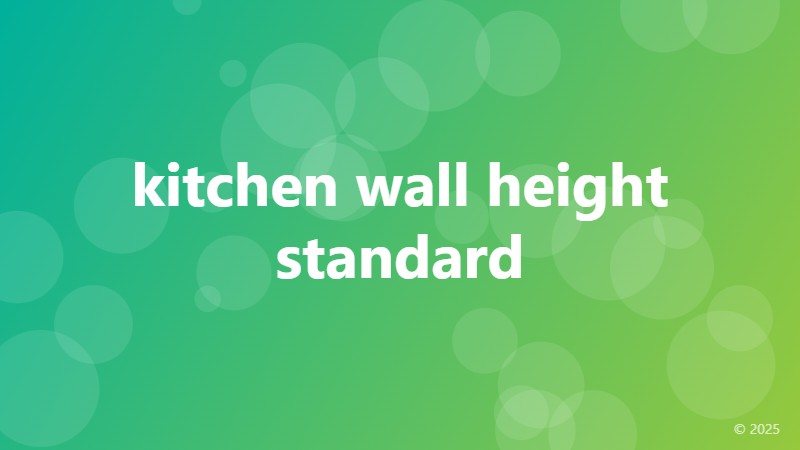kitchen wall height standard

Kitchen design is not just about aesthetics; it's also about functionality and safety. One crucial aspect of kitchen design that's often overlooked is the kitchen wall height. A well-designed kitchen wall height can make a significant difference in the overall functionality and comfort of the space. In this article, we'll delve into the standard kitchen wall height and explore the factors that influence it.
What is the Standard Kitchen Wall Height?
The standard kitchen wall height varies depending on several factors, including the type of kitchen, the location, and the personal preferences of the homeowner. However, according to the National Kitchen and Bath Association (NKBA), the average kitchen wall height is around 34 inches (86 cm) above the countertop. This height allows for comfortable standing and working while preparing meals.
In some cases, kitchen walls can be higher or lower, depending on the design style and the needs of the homeowner. For example, in a wheelchair-accessible kitchen, the wall height may be lower to accommodate the needs of individuals with mobility impairments.
Factors Influencing Kitchen Wall Height
Several factors influence the kitchen wall height, including:
1. Cabinetry and Shelving: The type and size of cabinetry and shelving units can impact the kitchen wall height. Taller cabinets and shelving units require higher walls to accommodate them.
2. Countertop Height: The height of the countertop also plays a significant role in determining the kitchen wall height. A higher countertop requires a higher wall to maintain a comfortable working height.
3. Appliances and Fixtures: The size and type of appliances, such as refrigerators and ovens, can influence the kitchen wall height. Larger appliances may require higher walls to accommodate them.
4. Personal Preferences: Homeowners may prefer a higher or lower kitchen wall height based on their personal preferences and cooking style.
Benefits of a Well-Designed Kitchen Wall Height
A well-designed kitchen wall height can bring numerous benefits, including:
1. Improved Functionality: A kitchen wall height that's tailored to the needs of the homeowner can improve the overall functionality of the space.
2. Enhanced Safety: A well-designed kitchen wall height can reduce the risk of accidents and injuries by providing a comfortable working height.
3. Increased Storage: A higher kitchen wall height can provide additional storage space for kitchen utensils, appliances, and cookware.
In conclusion, the standard kitchen wall height is around 34 inches above the countertop, but it can vary depending on several factors. A well-designed kitchen wall height can significantly impact the functionality, safety, and comfort of the kitchen space.